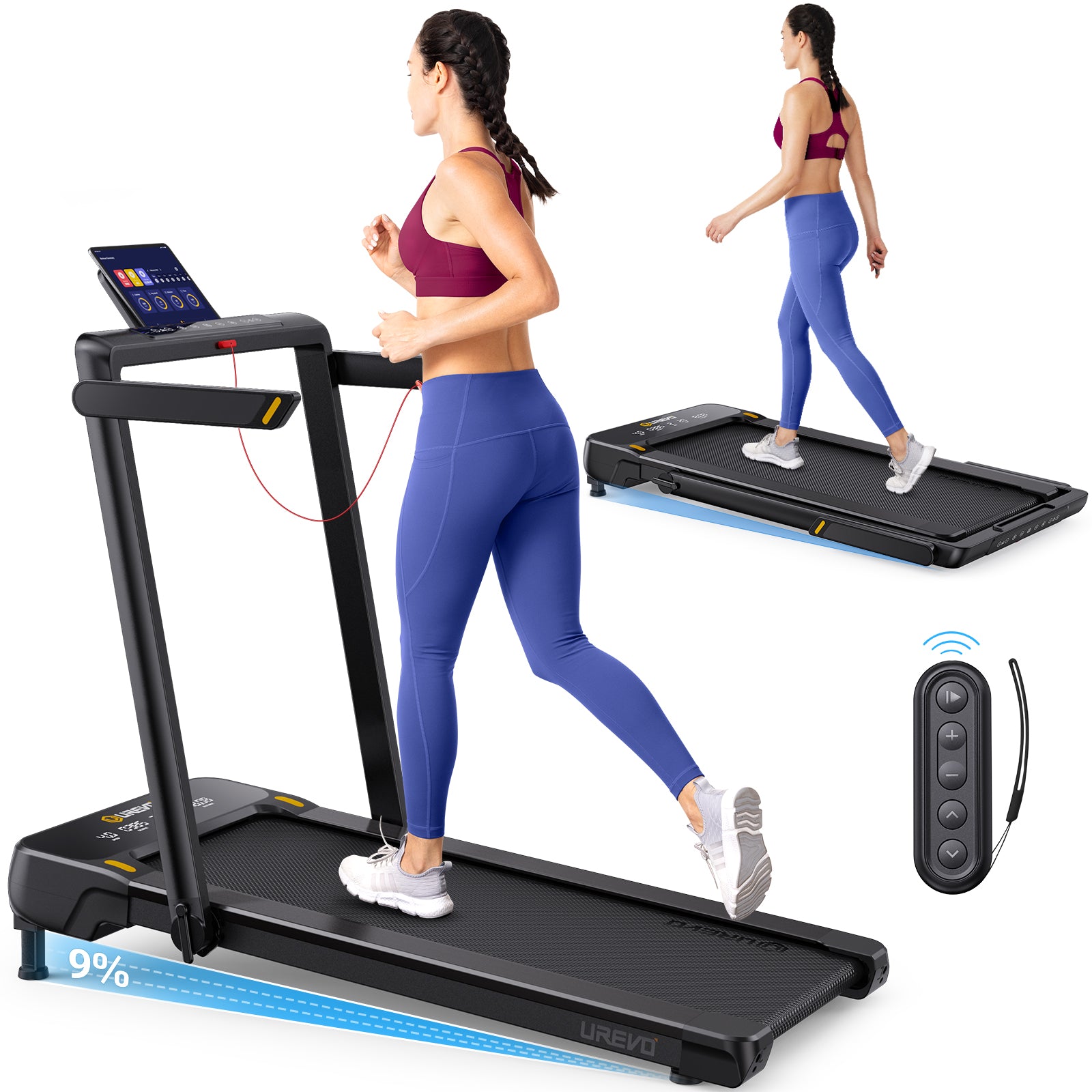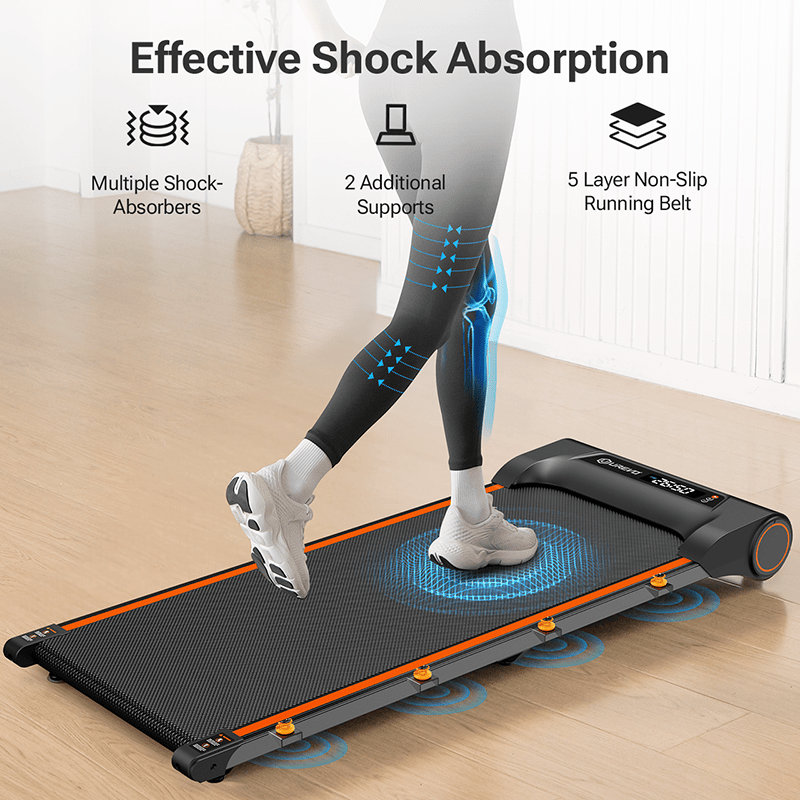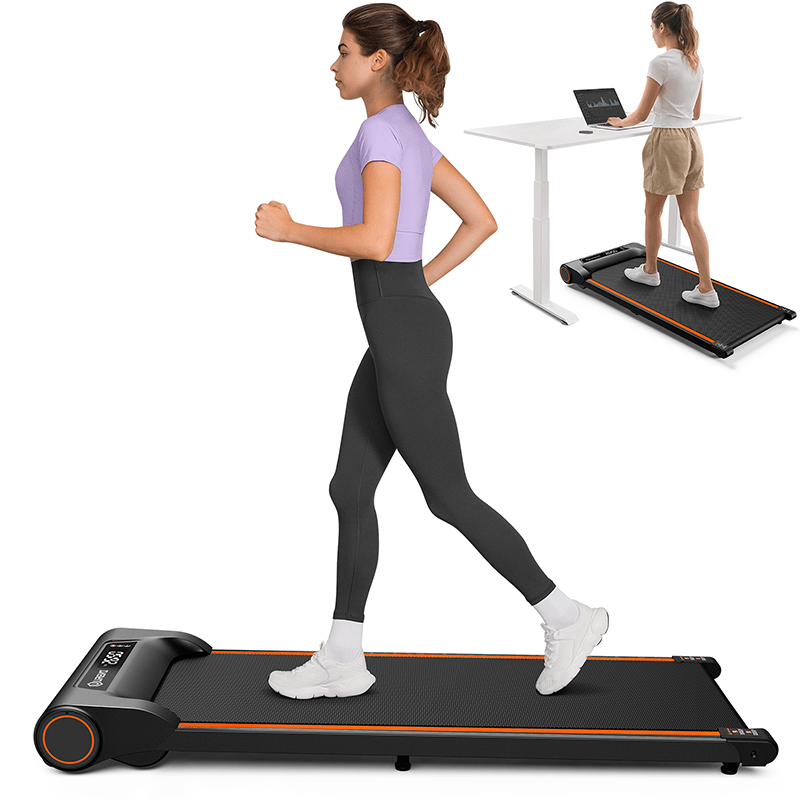Just as a well-oiled machine keeps a ship afloat, regular care and attention keep a treadmill in peak condition, ensuring smooth operation and durability over time. Proper maintenance is vital to extend a treadmill's life, improve its performance, and save on costly repairs.
The sections that follow will focus on everything needed for a complete treadmill care routine:
Daily Maintenance Tasks
Clean the Belt
- After each use, wipe the treadmill belt and surrounding areas with a soft, slightly damp cloth to remove sweat, dust, and debris. Focus especially on high-touch areas, including handrails and heart rate sensors, where sweat tends to build up.
- Avoid using any harsh chemicals, as these can degrade the belt material. A mild, water-based cleaning solution is typically best to maintain the belt’s condition over time.
Check the Belt Tension
- Daily inspection of the belt’s tension prevents slipping and ensures a safe, stable workout. For proper tension, lift the belt gently at its midpoint; it should lift only a few inches and settle back easily without slack. Adjust if necessary by referring to your treadmill manual, which typically recommends slight adjustments to the rear alignment screws if the belt is too loose or tight.
Weekly Maintenance Routines
Lubricate the Belt
- Lubrication reduces friction, preventing excess strain on the motor and prolonging belt life. Use a silicone-based lubricant suitable for treadmill belts, applying a thin layer beneath the belt along the deck. Most manufacturers recommend lubrication every 150–200 miles or every three months, depending on usage. Run the treadmill at a low speed after application to distribute the lubricant evenly.
Inspect Electrical Connections
- Every week, inspect visible electrical components, including power cords and plugs, for any signs of wear, fraying, or damage. Turn off and unplug the machine before examining the connections to avoid electrical malfunctions. Using a surge protector can further protect the machine from power fluctuations, which is particularly valuable if the treadmill has digital or motorized features.

Monthly Treadmill Care
Vacuum Internal Components
- Regularly removing dust and debris around the motor and interior parts prevents overheating and mechanical issues. Once a month, unplug the treadmill, remove the motor cover, and use a vacuum with a soft brush attachment to clear any buildup. Be cautious to avoid direct contact with electronic components while vacuuming. This proactive cleaning helps maintain the motor’s efficiency and prevents potential malfunctions.
Tighten Loose Bolts
- Vibrations during treadmill use can gradually loosen bolts. Monthly inspections of all bolts, particularly around the frame and handrails, help keep the treadmill sturdy. Use a wrench to ensure bolts are secure, taking care not to overtighten, which can damage the threads. This task enhances safety and reduces the likelihood of equipment malfunction or injury during use.
Quarterly Maintenance Checks
Aligh the Belt
- A centered belt avoids uneven wear and optimizes treadmill performance. Every few months, run the treadmill at a low speed to observe if the belt drifts. If it does, adjust using the alignment screws (typically located at the back of the treadmill) to bring the belt back to center. Small, gradual turns of the alignment screws can correct the position without over-correcting. This ensures smoother operation and reduces stress on the machine.
Inspect the Motor
- Regular motor checks detect early signs of wear, such as unusual noises or excessive heat. Run the treadmill without a load (no user) and listen for irregular sounds that could indicate loose screws or worn components. Identifying and addressing issues early, like misalignment or friction in motor parts, prevents more severe damage over time.
Annual Treadmill Servicing
Conduct Professional Inspection
- An annual professional service involves a thorough examination of the treadmill’s motor, electrical wiring, rollers, and belt condition. Professionals check for issues that might be challenging to detect independently, ensuring smooth performance and prolonging the machine’s lifespan. This detailed inspection, although not mandatory, is recommended for users wanting to prevent unexpected repairs or breakdowns.
Replace the Parts
- Over time, components like belts, rollers, and motor brushes naturally wear out. During annual servicing, a technician assesses these parts to determine if replacements are necessary. Replacing aging parts on time maintains treadmill performance, improves safety, and protects other components from additional wear due to malfunctioning parts.
Extend Your Treadmill’s Lifespan
Use it Properly
Never Exceed Weight Limits
Manufacturers provide specific weight limits for each treadmill model to avoid overloading the motor and belt, which can lead to excess wear. Consistently staying within this limit prevents motor strain, belt damage, and mechanical issues. It’s essential to verify the machine’s weight capacity—most residential models support 250–300 lbs., while commercial models often accommodate higher limits .
Correct Running Form
Balanced running form not only enhances workout quality but also minimizes unnecessary stress on the treadmill components. Aim for smooth, even strides to reduce impact on the belt and deck. Avoid heavy stomping or leaning on the console, as these actions can cause uneven wear or increase stress on the motor and deck.
Store it Properly
Control Temperature and Humidity
Ideal treadmill storage is in a cool, dry area, away from direct sunlight or damp environments. Heat and UV exposure can weaken plastic and rubber parts, while high humidity may affect electrical components and lead to rust. Protecting your machine from these elements extends its lifespan and preserves performance.
Avoid Dust Buildup
Dust can accumulate within the motor and other internal parts, causing overheating or malfunction. Positioning the treadmill in a low-dust environment and using a cover when not in use helps prevent dust buildup and reduces the frequency of cleaning tasks.

Final Words
Following a comprehensive treadmill maintenance routine keeps it in top shape, reduces repair costs, and enhances user safety. Regular care transforms the treadmill into a long-lasting fitness partner, ensuring a smoother workout experience for years to come.
FAQs
How often should I clean my treadmill?
Wipe down the belt and console after every use to prevent dust buildup. Perform a deeper clean, including vacuuming around the motor and belt, at least once a month to maintain performance.
What type of lubricant should I use?
Use a silicone-based treadmill lubricant. Avoid household oils like WD-40, as they can attract dust and damage parts. Check your treadmill’s manual for specific recommendations.
How do I know if my treadmill belt needs tightening?
Lift the belt at the center. It should lift no more than 2–3 inches. If it feels too loose or shifts during use, follow the manual’s steps to adjust the tension.
Why is my treadmill making noise?
Unusual sounds often indicate loose screws, misaligned belts, or a lack of lubrication. Inspect and address these areas. Persistent noise may require professional attention.
Can I store my treadmill in a garage or basement?
Only if the space is dry, dust-free, and not subject to extreme temperatures. Cold, damp, or dusty environments can damage electronic and structural components over time.
What’s the best way to keep my treadmill dust-free?
Use a protective cover when the treadmill is not in use and place it in a low-dust area. Wipe down surfaces weekly and vacuum under the deck monthly to avoid dust buildup in critical areas.
How can I tell if my treadmill motor is overheating?
Signs of overheating include a burning smell, a hot motor cover, or the treadmill shutting down unexpectedly. If this occurs, turn off the treadmill, unplug it, and let it cool. Regular cleaning and proper lubrication help prevent overheating.
Should I use a surge protector for my treadmill?
Yes, plugging your treadmill into a surge protector shields it from power spikes, which can damage the motor and electronics. This is especially recommended for treadmills with digital displays.
How do I prevent my treadmill belt from slipping?
Ensure proper belt tension and alignment by adjusting the rear bolts according to your manual’s guidelines. Lubricating the belt regularly also reduces slipping by keeping friction at optimal levels.
What’s the expected lifespan of a treadmill?
With regular maintenance, a treadmill can last 7–12 years, depending on usage frequency, environment, and build quality. High-end models with consistent care may last even longer.















